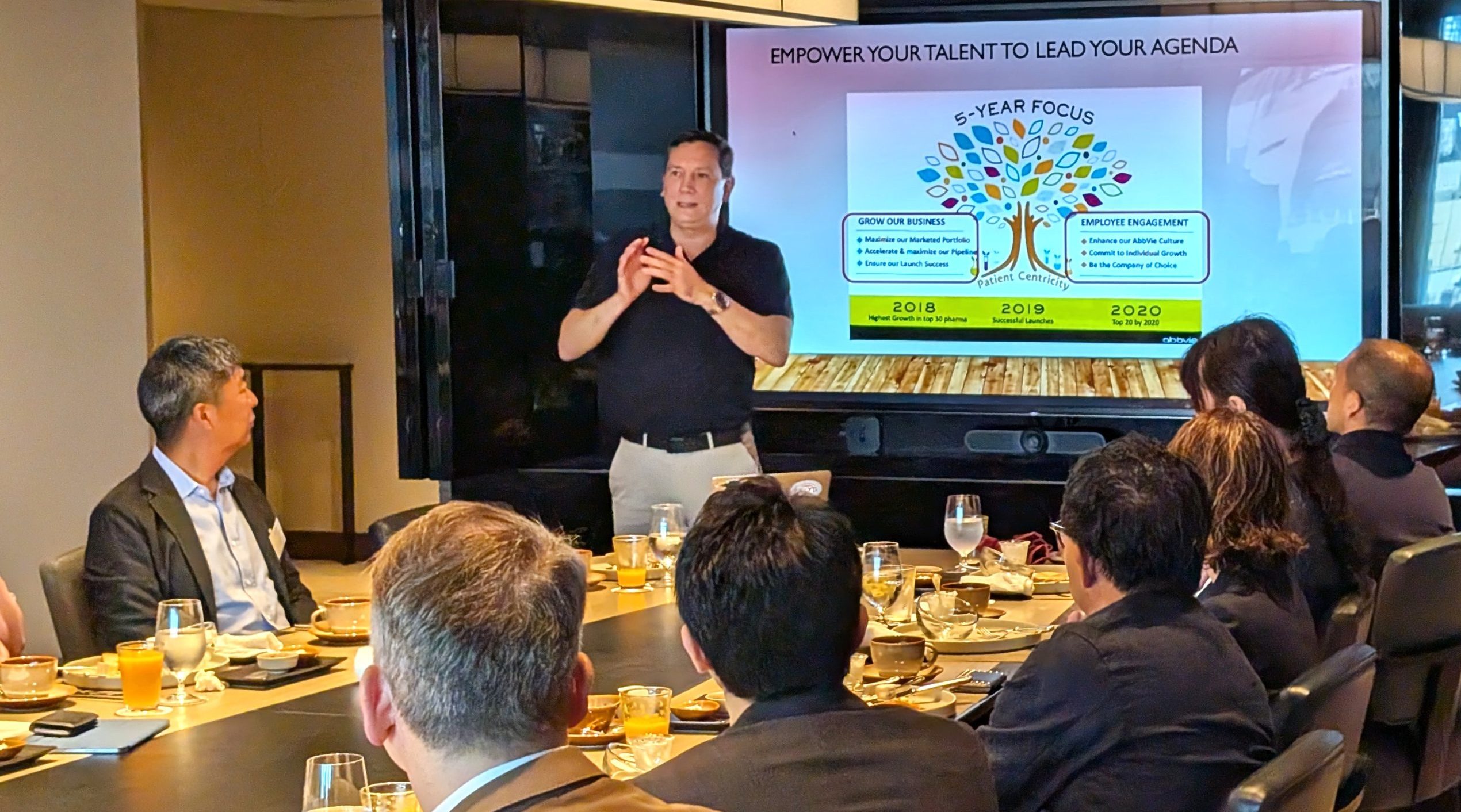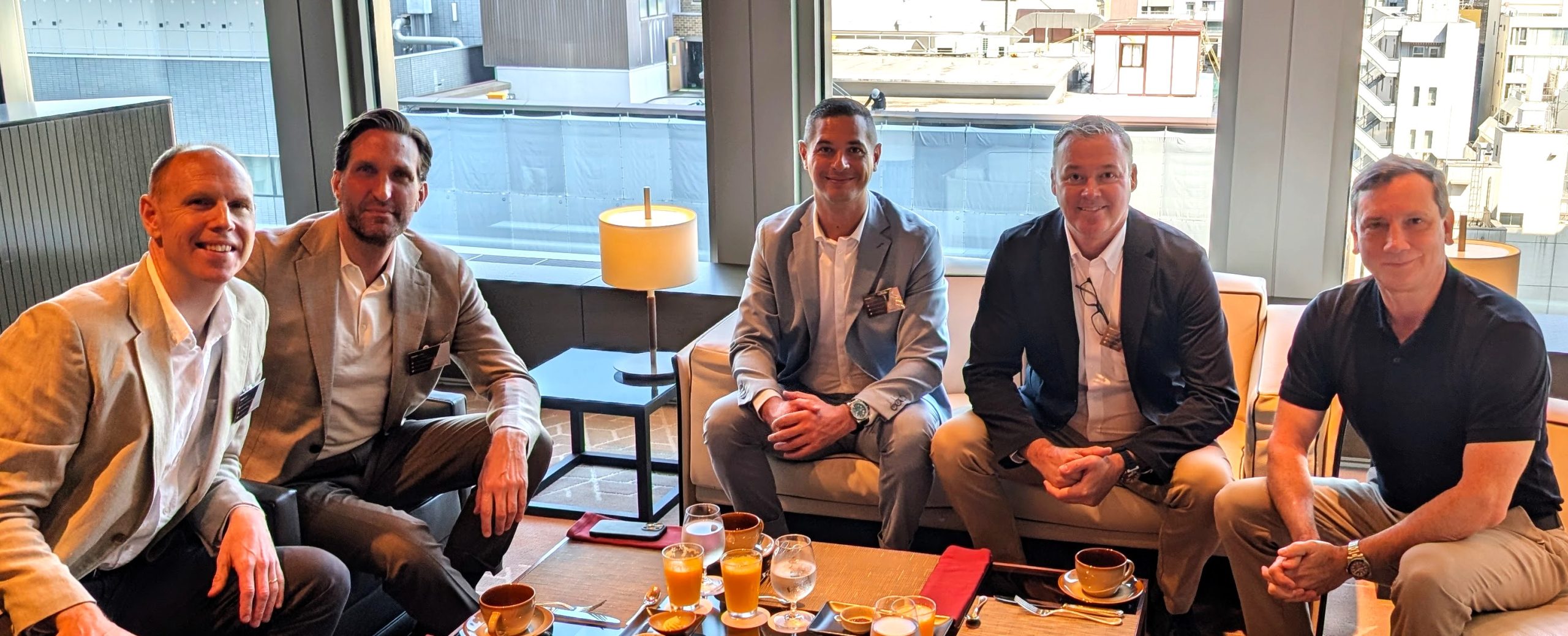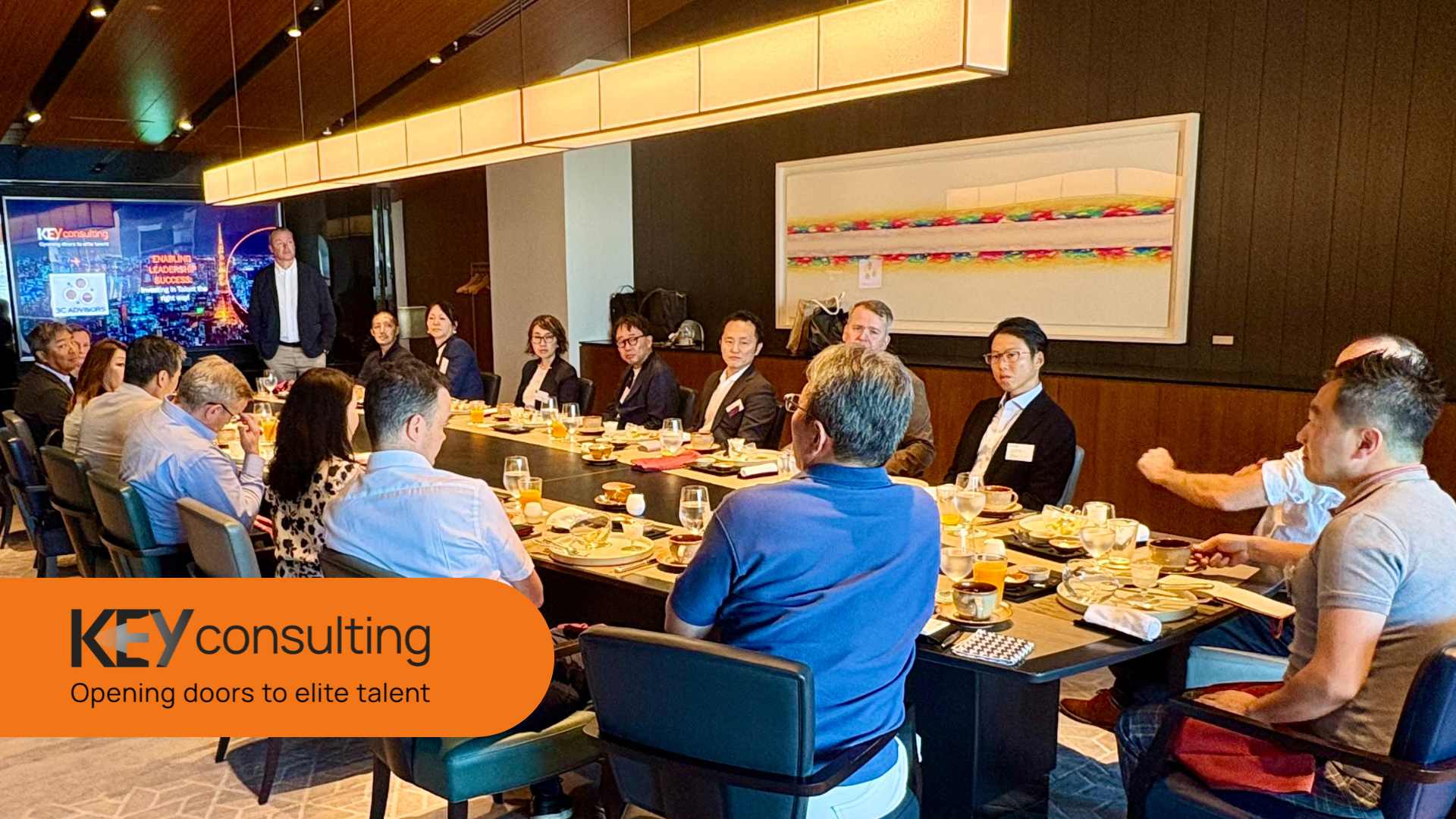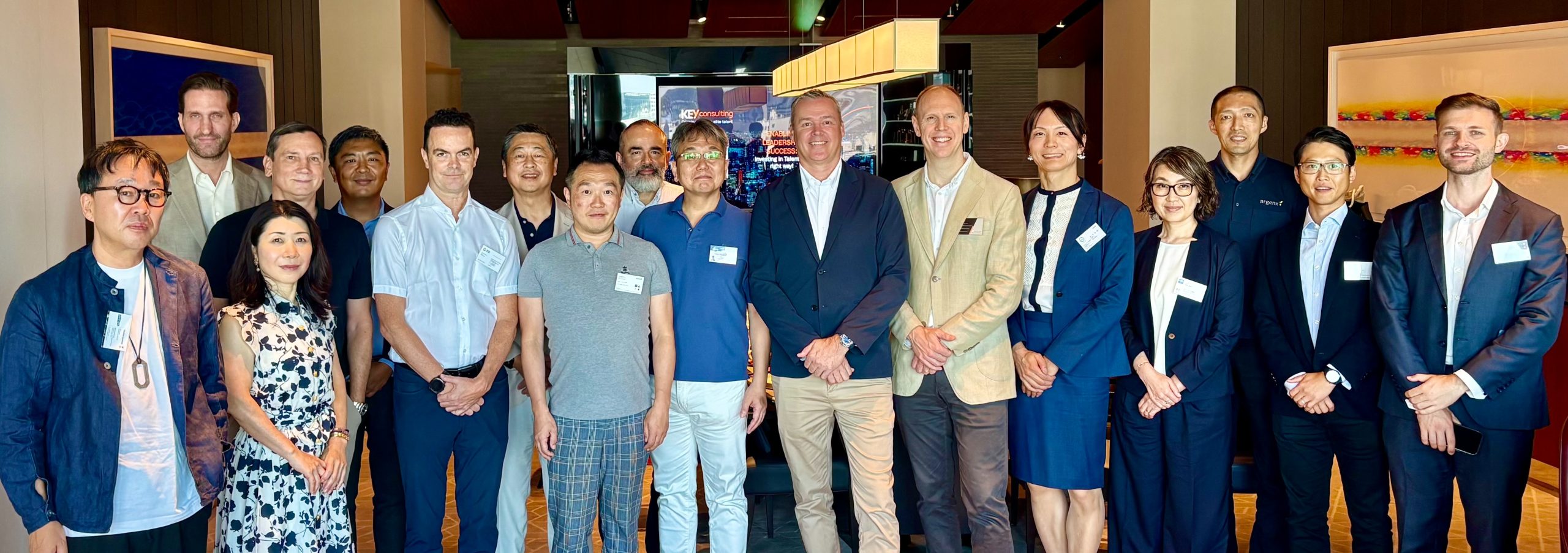At our recent C-Suite leadership forum hosted by Key Consulting, the theme of “Enabling Leadership Success” was explored in depth by James Feliciano, former GM of AbbVie Japan and now Founder & CEO of 3C Advisors. With over 20 years in the pharmaceutical industry and 13 years as a Country Manager across Wyeth, Pfizer, Merck Serono, and AbbVie, James now dedicates his work to consulting, coaching, and connecting leaders to unlock organizational potential.

The chat was engaging for the 20 plus C-Suite leaders in the room, which offered some insights James felt made his career journey a successful one. This success was not an individual success but a collective and team-based success. It was this story that James focused his presentation on, remembering how those many leaders on the rise around him were put in a position to grow and develop in the ecosystem of self-development that James fostered as a leader. We would like to highlight some of the key takeaways:
Core Philosophy: Anchoring Leadership in Vision
James emphasized that leadership success begins with a clear, compelling vision co-created with the employees: “People support what they help to create”. In Japan, where consensus and alignment are especially critical, engaging talent early in shaping the vision significantly boosts commitment and cultural ownership.
Modeling Leadership and Coaching Talent
Leaders must model what good looks like, not only in values but also in presence and behavior. James stressed the importance of:
- Setting clear expectations for leadership behavior trading some examples the group could discuss
- Regular one-on-one meetings focused on leadership growth
- Providing candid feedback on content, presentations, and executive presence. James felt honest tough love was more effective to challenge those to improve than passive praise.
This consistent coaching builds a pipeline of leaders who live the vision and drive cultural alignment. Consistency starts with the leader — embody the standards visibly and hold yourself accountable in measurable ways.
AbbVie Japan Case Study
AbbVie Japan offers a remarkable case study of these principles in action. Under James’ leadership of 10 years, the company scaled revenue, and along with it came rapid talent development and growth. A focus on retaining more than 95% of its key talent and efforts to make people feel like they were constantly developing and challenged surely was a recipe for sustained growth. At the same time AbbVie achieved #14 overall in Great Place to Work Japan (2024) and #1 in pharma. This was a residual achievement to successfully investing in people and their growth.
Some of the key practices James initiated:
- Embedding the vision in onboarding, with James personally addressing 20–40 new employees each month
- Stretch assignments and committee leadership to provide growth in a flat structure
- Proactive development of female leaders through direct interventions and mentoring
- HR and Comms as co-creators of culture, driving data-driven insights and consistent messaging
Key Takeaways for Leaders to help foster a similar culture of success:
From AbbVie and his recent consulting work, James shared and discussed some universal lessons he believes in passionately:
- Co-create visionto engage top-talent and help them anchor leadership development
- Empower your peopleby giving them visibility, stretch projects, and cultural ownership
- Coach consistently— growth requires candid feedback and role modeling in the business
- Balance global and local— adapt HQ frameworks to Japan’s unique realities sometime leaning in the direction that is right for the situation
- HR positioned as strategic partner— essential in building and sustaining leadership culture
This forum wasn’t a lecture; it was an exchange, a dialogue, and a collaborative learning experience. Key Consulting sees this type of peer-to-peer sharing of ideas, insights and networking as the most impactful. We wish to continue the dialogue and the learning as we help our network strive for the next leadership role they deserve.

Key Consulting will continue this dialogue with future leadership forums planned for November, offering further opportunities for executives to share insights and practical approaches to talent development and leadership success.
👉 Contact connect@keyconsulting-group.com to receive news on upcoming events or if you wish to host one with our help.
___________________________________________________________________
Q&A Session on the day for additional insights for review to our network!
The many C-suite executives from our network who joined us in the event contributed to a lively and insightful Q&A session.
Q1. How do you identify high-potential talent early?
James explained that a clear five-year vision acts as a filter. Motivated individuals “raise their hands” by volunteering for projects and committees. Leaders should set expectations that employees must communicate their ambitions, while creating structured opportunities to surface this enthusiasm.
Q2. How do you ensure female talent is supported in Japan, where self-selection is less common?
Proactive outreach is essential. Leaders must personally invite and encourage female employees to step forward, while senior women mentor junior talent and build safe networks. Relying on self-selection alone risks missing top talent.
Q3. What kind of feedback do you give on executive presence?
Executive presence is about how leaders carry themselves. Direct but respectful feedback on professional attire and presentation style can help elevate credibility quickly.
Q4. How did AbbVie Japan sustain leadership culture while growing so rapidly?
Consistency was key. James personally welcomed new hires each month, reinforcing the vision from day one. The “3C Mindset” — Communicate, Collaborate, Celebrate — was embedded in everyday practices, creating cultural anchors during rapid scaling.
Q5. How do you balance global HQ frameworks with Japan’s local needs?
James shared that AbbVie localized initiatives when needed — sometimes delaying rollout or adjusting messaging. Japan positioned itself as aligned but adapted, using a “Japan is different” rationale to ensure engagement without rejecting HQ priorities.
Q6. What role did HR and Comms play in enabling leadership?
HR and Comms were co-creators of the vision, not just support functions. HR provided data (turnover, exit interviews) to build credibility, while Comms ensured consistent messaging across 2,000 employees. Together, they reinforced leadership culture at scale.





